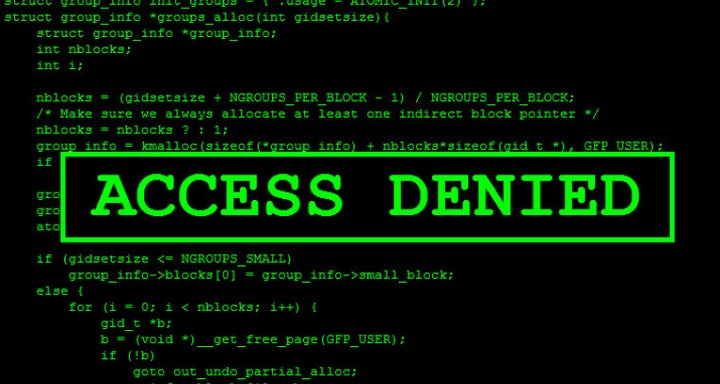
It’s 2018 and the information battle to control the hearts and minds of citizens continues from Russia to China and from Ethiopia to Iran. According to a 2017 Freedom House Report, “governments around the world have dramatically increased their efforts to manipulate information on social media over the past year.” One key finding includes the role “online manipulation and disinformation tactics” played in at least 18 countries including the United States. The Freedom on the Net 2017 report says state-led interventions present a major threat to the notion of the internet as a “liberating technology.”
Simin Kargar is a human rights lawyer with a focus on the interrelations of technology and human rights. She studies the interplays of social media, power and propaganda, harmful speech online, and gender-based violence and technology at Harvard's Berkman Klein Center for Internet and Society. In the Q/A below, Kargar shares her insights on censorship of information in the context of Iran, one of the worst countries in the world for internet freedom.
Ardalan: Government control over citizens' use of the internet and access to information has been written about a great deal in the context of China ("Great Firewall") and Iran. How can citizens of these nations compete in the ideological battle for freedom of information?
Kargar: It has been a constant cat and mouse game. Since the Islamic Revolution in 1979, censorship has targeted circulation of unfettered information and free speech in many forms. It started by regulating books, the press, and other cultural publications and evolved into the more recent forms of regulating network connections and online content.
At different times, citizens have resorted to different solutions. In pre-Internet days, they would bypass the ban on cultural publications by acquiring cassettes and video tapes in the black market. As satellite penetration rate increased, Iranians began to tune into television channels to obtain uncensored information. Despite the existing legal ban on the sale and ownership of satellite equipment, many Iranian households are believed to own satellite dishes.
The rise of internet penetration in the 2000s, offered a new realm for both consumers and censors of information to explore and extend the battle to. As more people came online, the state imposed more severe measures of information control in cyberspace. As a result, people geared up and became more tech savvy in order to bypass the new limitations.
Simultaneously, there have been extended efforts to help people around the world, including Iranians, to enjoy higher levels of freedom of Internet. These measures have offered new circumvention tools that almost all Iranian and Chinese citizens are well versed in (China was reportedly the world’s worst abuser of internet freedom according to Freedom on the Net, for the third consecutive year.) But the battle surely continues as new technologies emerge that pose challenges to authorities in these countries.
Ardalan: You have studied internet censorship in Iran for the past 8 years, tell us about the different modes of information control that the Iranian government has enforced through the years.
Kargar: Iran started by filtering domain names and specific website and web page addresses (URLs). Since this method was not sustainable, they moved on to keyword filtering applied to a broad range of words and eventually blocked topics such as sex and gender, including pornography, sexual health, LGBTQIA issues and -- in some cases -- reproductive rights, religious minorities like Baha'is, and political opposition. To follow the Chinese model of Internet censorship even more closely, since 2006 the Iranian government has been pursuing the development of a national Internet to leave out of their "digital" borders any content that is thought to oppose the Islamic and national values of the country.
Following several cyber attacks on nuclear facilities of Iran in 2010, authorities determined that a domestic network “internet” infrastructure could protect national security and assure some level of independence. Since the recent protests broke out in December 2017, many have reported that while their connection to the global Internet has been restricted, access to websites and platforms that are hosted on the national network remain uninterrupted. This is a perfect example of how such development has led to limiting access to information during a politically sensitive time.
The emergence of blogging and later on social networks were another turning point for censors in Iran as they encountered yet another way that people used to connect and communicate beyond the state's preferred, centralized mediums. Blogging offered every citizen a tool to express themselves free of state-imposed restrictions. It took the Iranian government a few years until they started cracking down on bloggers. Threatened and persecuted for blogging, many migrated to social networking websites to connect with others inside and outside Iran.
The Islamic Republic treated Facebook and Twitter with caution up until 2009 but Iran’s Green Movement affirmed the capacity of social networks for organizing protests and reporting to the world. Therefore, these platforms were blocked and remain filtered to date. Most recently, Iranians have adopted messaging applications to communicate with one another, access and circulate news, and even mobilize around political causes such as the 2017 presidential election. Let's keep in mind that the monopoly of state over telecommunication infrastructure has not changed over the years. In fact it has tightened as security entities such as the Islamic Revolutionary Guard Corp (IRGC) has obtained a larger share of the industry.
In addition to censoring information, different forms of electronic intrusion such as state-sponsored hacking and phishing, surveillance of communication and devices, and DDoS attacks on opposition websites have ramped up in the past years. On top of that, cyber abuse and online harassment are increasingly applied as a form of information control to curb free speech and exert power in cyberspace. In recent years, Iran has appeared to be particularly invested in weaponizing information against dissidents and activists in an attempt at dominating social and political discourses. Targeted harassment of dissidents on social media appears as the most recent form of strategic communication, where particular messages are crafted by state-affiliated actors to manipulate public opinion.
Ardalan: We hear a great deal about the need for Iranians to have a "civil society." Define what that means in the context of Iran. What are the key elements of civil society?
Kargar: Civil society thrives when non-governmental entities can pursue and advocate for citizens' will through dialogue and peaceful means. While civil society began to slowly develop under former Iranian President Khatami's administration, the shift in power from reformists to conservatives in 2005 led to so much political pressure on the CSOs and activists. In the aftermath of the Green Movement in 2009, many activists were arrested or persecuted and forced to leave the country.
The gap that followed weakened citizens' capacity to pursue peaceful advocacy measures. Current President Hassan Rouhani was elected in 2013 partially due to his promises of moderation and civility in governance, including passing a charter of citizens' rights. While a slim set of nongovernmental organizations remain engaged with the executive branch, there is little evidence of a systematic growth of civil society in Iran. This in tandem with the continued persecution of activists — presents a worrisome prospect of a robust civil society inside the country.
Fortunately, Iranian diaspora and civil society organizations remain active, informed and engaged with the international community on matters that could benefit the people of Iran. However, working from afar with little presence on the ground also entail challenges and does not compensate for an active civil society in Iran.
Ardalan: Going back to the 1953 CIA-backed coup that brought down Iranian Prime Minister Muhammad Mossadegh, there have been historical events that embolden the Iranian government to control information and safeguard against foreign interference. How can governments balance freedom of information for citizens with foreign interference?
Kargar: The truth is that the decentralized nature of the Internet has made it challenging -- if not impossible -- for states to remain the sole ruler of online spaces. There is no border in cyberspace and that may be hard for repressive states, in particular, to admit. But they have sustained this battle and seem to extend their arms as widely as they can.
With new actors like tech companies added to the mix, it is even more complicated to push back on foreign interference. Take the example of 2016 election in the US and how purveyors of misinformation managed to taint the election scene, partially through Facebook posts and ads. Imposing more regulation on these platforms may be perceived as censorship, and in many cases like the global south, is not even an option. It will lead to longer lasting impact, if meaningful steps are taken towards digital literacy of users to equip them with the right tools to spot misinformation and other possible interferences. This is where civil society can again play a significant role in educating users and engaging state, private sector, and citizens to ensure the diversity of voices and demand more transparency from companies, in particular.
Related Links:
